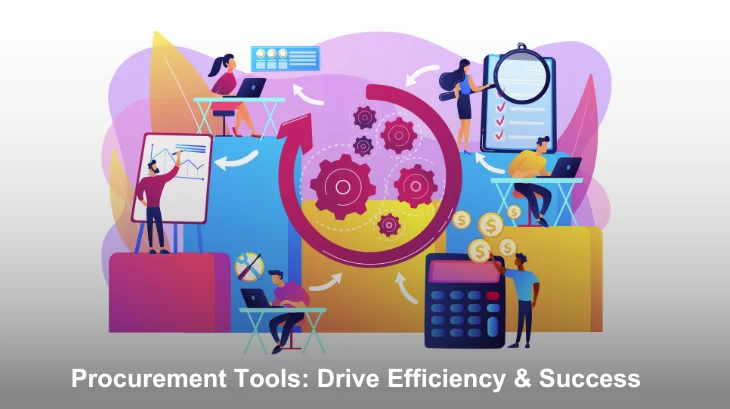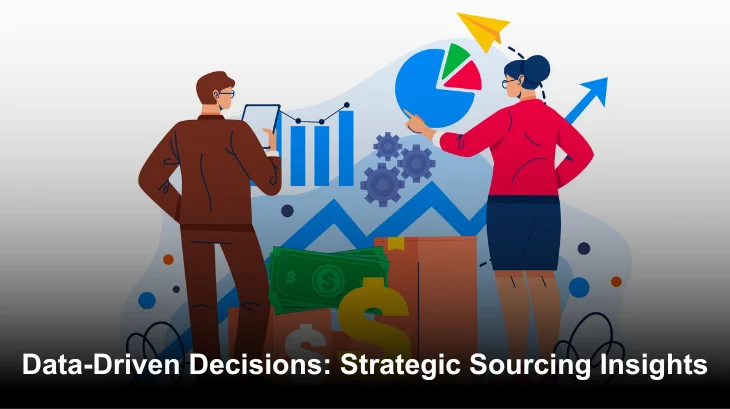
Have any questions Submit an Inquiry


In today’s rapidly evolving procurement landscape, where businesses constantly strive for efficiency and competitive pricing, a shadowy adversary often lurks unnoticed – the cartel. These seemingly innocuous alliances between businesses can subtly distort the very fabric of free-market competition, turning the tables in their favor while leaving others grappling with the consequences.
A cartel, at its core, represents a clandestine pact between enterprises, choosing collaboration over competition. Instead of vying against each other, these entities carve out territories, fix prices, and essentially play puppeteer with the market’s dynamics. Such anti-competitive practices don’t just tweak numbers on a spreadsheet; they ripple through the entire business ecosystem. For the uninitiated, this might seem like mere market strategy, but in reality, it’s a deep-rooted manipulation that stifles innovation, inflates prices and compromises the quality of products and services.
The ramifications of these practices are manifold. Imagine a world where choices are mere illusions, where prices are artificially inflated, not by market forces, but by covert agreements. This not only burdens consumers financially but also stymies the growth of genuine competitors, especially those who play by the rules. In such a landscape, the challenge for modern businesses isn’t just about staying ahead; it’s about discerning these veiled alliances and ensuring a level playing field.
Procurement, the lifeblood of business operations, often finds itself ensnared in the intricate web woven by cartels. But what exactly is this entity that holds such sway over market dynamics, and why should businesses be wary?
At its essence, a cartel is a coalition, often covert, formed between businesses with a singular aim: to diminish competition. Rather than engaging in healthy market rivalry, these businesses band together, setting prices, dividing markets, and orchestrating supply. Such collaborations, while beneficial for the cartel members, stifle genuine market competition, leading to a landscape where innovation takes a backseat, and monopolistic tendencies thrive.
The influence of cartels isn’t limited to backroom deals; it’s felt every time a consumer reaches into their wallet. Numerous economic studies and antitrust evaluations over the past two centuries have spotlighted a startling revelation: cartels, on average, inflate prices by about 25%. This isn’t merely a percentage; it’s a testament to the profound impact cartels exert on market prices. But the repercussions don’t end at inflated costs. With cartels controlling the market strings, product and service quality often deteriorate, leaving consumers with fewer choices and compromised standards.
In this complex battleground, Chief Procurement Officers (CPOs) emerge as the vanguard, tasked with the monumental responsibility of identifying and dismantling these cartels. Their role isn’t just about optimizing procurement processes; it’s about safeguarding the very principles of free-market competition. By leveraging insights, market intelligence, and strategic negotiation, CPOs are uniquely positioned to challenge these anti-competitive alliances, ensuring businesses get fair deals, quality isn’t compromised, and innovation continues to flourish.
In the dynamic world of procurement, reverse auctions have emerged as a transformative tool, revolutionizing the way businesses negotiate, collaborate, and secure deals. However, like all powerful mechanisms, reverse auctions, too, are vulnerable to manipulations, especially from the concealed hands of cartels. Understanding this susceptibility and its potential implications is critical for any organization aiming to harness the full potential of reverse auctions.
Reverse auctions, in stark contrast to traditional auctions, flip the script. Here, sellers compete to secure business from a buyer, progressively lowering their prices in the process. It’s a competitive arena, driven by transparency and the promise of securing the best deal for the buyer. The very essence of reverse auctions lies in fostering an environment where competition thrives, leading to optimal prices and superior value propositions.
However, this transparent, competitive landscape becomes fertile ground for cartels to exert their influence. Given the open nature of bidding in reverse auctions, cartels, armed with prior agreements, can strategically manipulate bids. By artificially controlling the pricing or orchestrating the bidding sequence, cartels can undermine the very essence of competition that reverse auctions aim to promote. In such scenarios, instead of deriving value, businesses might find themselves entangled in artificially inflated prices or compromised offerings.
Allowing cartels to operate unchecked in reverse auctions isn’t just a fleeting concern; it’s a systemic threat. Beyond the immediate implications of inflated prices, the presence of cartels erodes trust in the reverse auction process itself. Businesses might become wary of this tool, questioning its efficacy and transparency. Moreover, genuine suppliers, those who wish to compete fairly, might be dissuaded from participating, knowing that the game is rigged from the outset. Over time, this can lead to reduced participation, diminished competition, and a marketplace dominated by cartel-driven dynamics.
Cartels, with their surreptitious alliances and covert dealings, pose a significant challenge to businesses. Their influence can distort the marketplace, making it imperative for companies to adopt proactive strategies to detect and combat these anti-competitive forces. Let’s delve into the methodologies that can be employed to identify cartels and the proactive measures to counteract their influence.
In the vast, interconnected world of procurement, diversification is more than just a strategy; it’s a lifeline. One of the most potent ways to disrupt established cartels and infuse a fresh competitive spirit into the bidding process is by empowering new suppliers. But how do businesses go about this, and what advantages does this strategy offer?
In the digital age, technology isn’t just an enabler; it’s a game-changer. As procurement processes evolve, so do the tools and platforms that support them. One of the most transformative shifts has been the rise of electronic platforms, particularly e-auctions, which offer a level playing field, ensuring supplier anonymity and fostering genuine competition. But how exactly does technology make this possible, and what are the broader implications for businesses?
In the intricate dance of procurement, cartels lurk as shadows, threatening to distort the rhythm of genuine competition and value creation. While technology and supplier diversification play crucial roles in countering these cartels, a holistic approach demands a broader toolkit. Here are some additional strategies that can fortify the procurement process, ensuring it remains untainted by cartel influences.
In the intricate tapestry of global procurement, cartels emerge as knots that distort the fabric of genuine competition. At EmpoweringCPO, we don’t just untangle these knots; we weave a stronger, more resilient fabric that resists such distortions. Our holistic suite of services, coupled with a deep understanding of global procurement dynamics, positions us as the vanguard against cartels.
The procurement landscape, with its myriad complexities and vast potential, is akin to a chessboard. On this board, cartels move like shadowy figures, attempting to control the game, skewing the odds in their favor. However, the true essence of procurement isn’t just about playing the game—it’s about setting the rules that ensure fairness, competitiveness, and value for every stakeholder involved.
Proactive measures against cartels aren’t just a strategic move; they’re an ethical imperative. By ensuring transparency and fostering genuine competition, businesses not only safeguard their interests but also contribute to a healthier, more equitable market ecosystem. It’s not just about countering cartels; it’s about championing a vision of procurement where merit trumps manipulation, where partnerships are built on trust, and where every bid reflects genuine value.
At EmpoweringCPO, we don’t just envision this landscape—we actively shape it. With a suite of services tailored to the unique challenges of today’s procurement world, we stand as sentinels against anti-competitive forces. Our commitment goes beyond transactions; it’s about transforming the very ethos of procurement.
So, as you navigate the intricate alleys of procurement, we invite you to partner with us. Let’s champion a future where cartels are relics of the past, and where every procurement decision is a testament to transparency, fairness, and unparalleled value. Dive deep into EmpoweringCPO’s suite of services, and together, let’s shape a cartel-free procurement horizon.
Email: Sales@EmpoweringCPO.com
Phone no: +91-987-956-4584
EmpoweringCPO is a team of experienced sourcing and procurement professionals with hands on experience of having worked with many fortune 500 companies. The company was founded in 2011 and since then has executed multiple strategic sourcing projects and have achieved average savings of 10-12% so far. In addition to Strategic Sourcing their other offerings are Spend Analysis, Procurement Intelligence, Procurement Analytics, Best Cost Country Sourcing, Procurement Outsourcing, Built Operate Transfer, Supplier Diversity, Sustainable Procurement, Tail Spend Management, Item Master Optimization, Collective Buying, Compliance Tracking and Managed Procurement Services.




Compliance management is very critical as otherwise the procurement organization may run into a scenario where there is a huge gap between realized savings and reported savings. Many procurement functions estimate large savings numbers when contracts are signed. They also invest significant time and effort in negotiating contracts for necessary goods and services, only to have a third or more of their purchasing dollars flow outside those deals. Some of the obvious fall-outs of non-compliance and maverick purchases are:
As compared to the current contract that was finalized after the sourcing process, the tool helps in tracking:
The objective of this tool is to ensure that the orders are placed only with the vendors that were shortlisted after the sourcing process and at the same price that was agreed upon and negotiated during and after the strategic sourcing process.